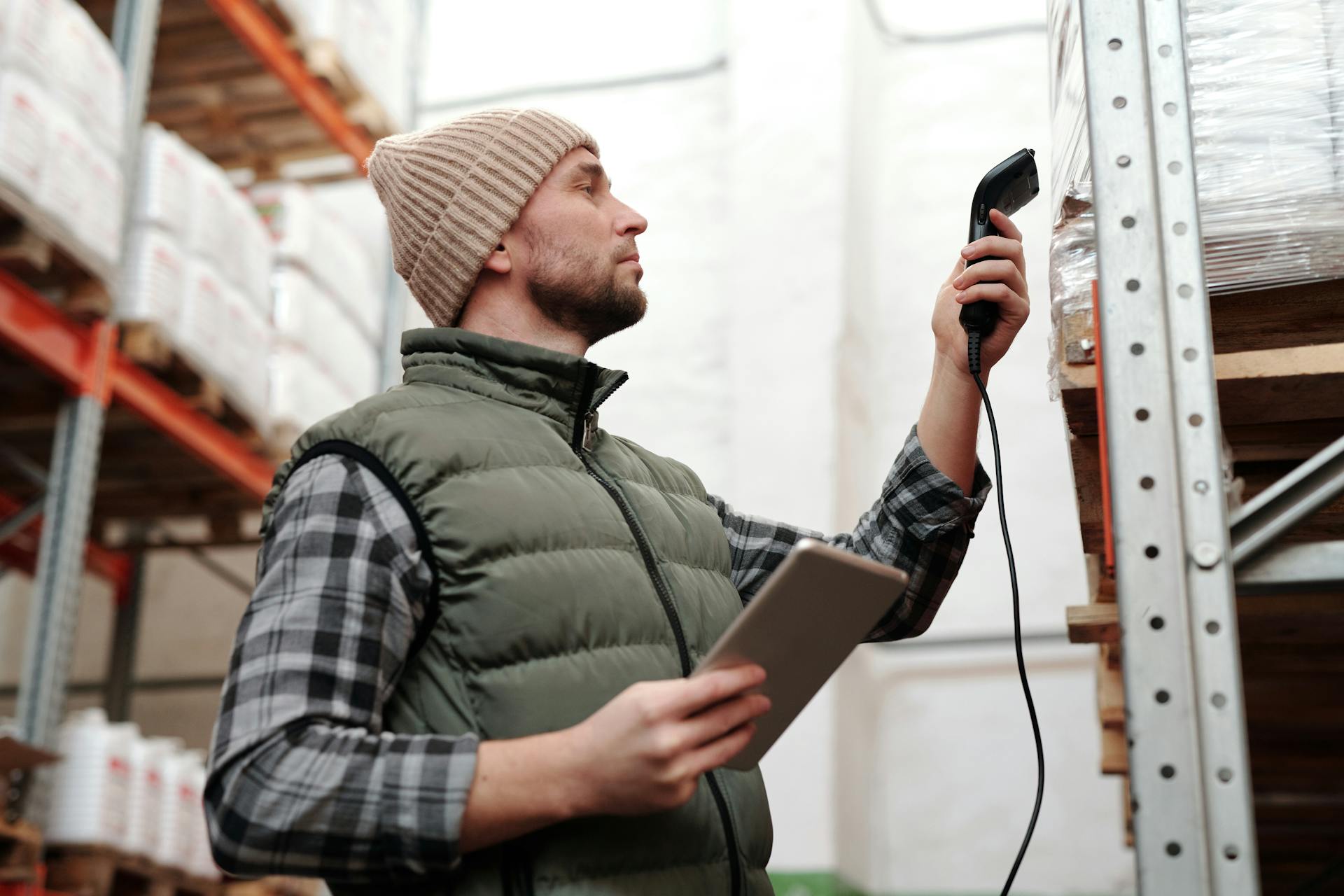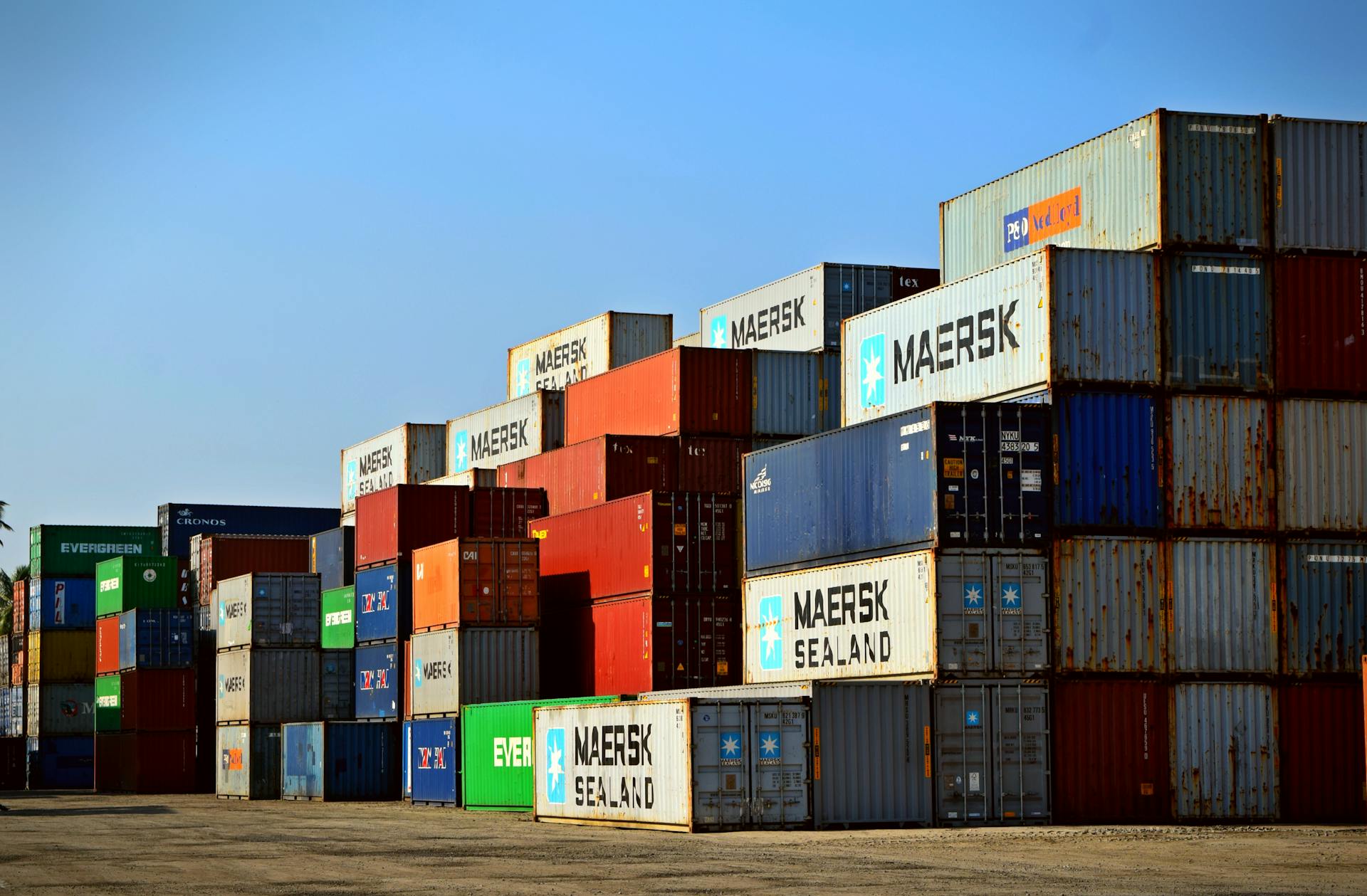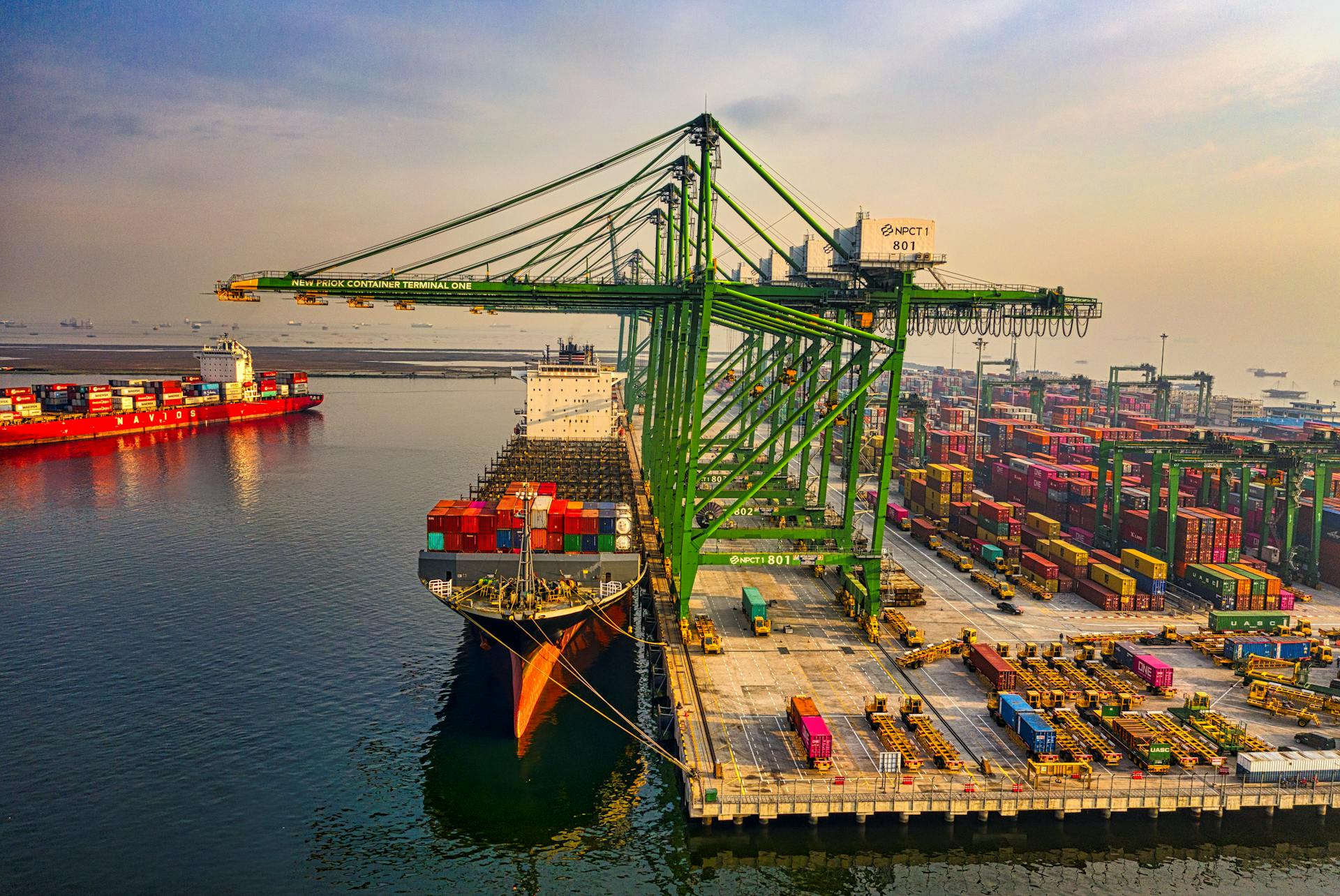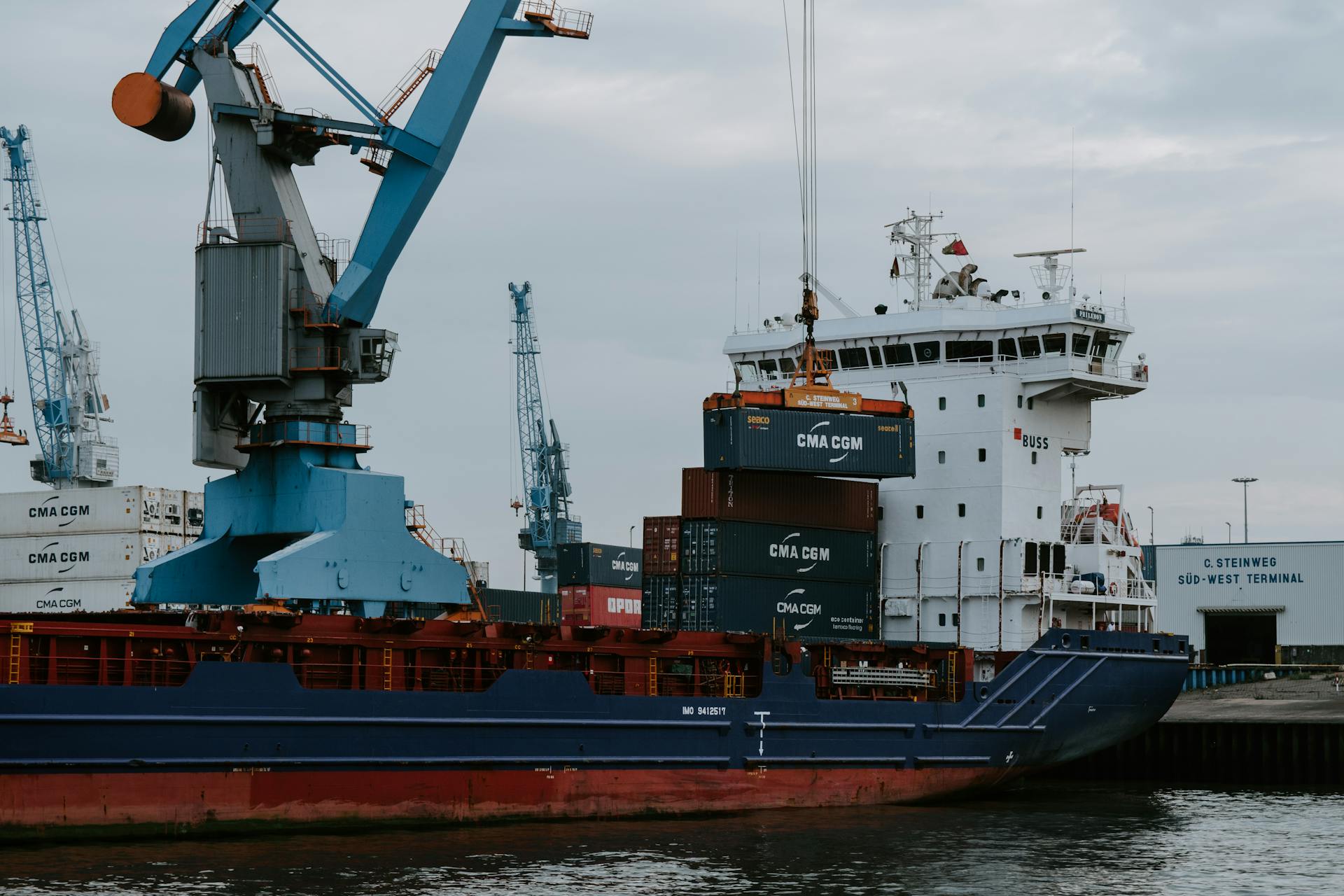
Cargo scanning is a crucial step in ensuring the safety and security of international shipping. It involves inspecting cargo for prohibited or restricted items, such as hazardous materials or contraband.
The International Civil Aviation Organization (ICAO) recommends that cargo scanning be performed using non-intrusive inspection (NII) techniques to minimize handling and reduce the risk of damage to the cargo.
The use of NII techniques can help to detect a wide range of prohibited items, including explosives, firearms, and narcotics. These techniques can also help to identify potential security threats, such as unmanifested cargo or tampered packaging.
By implementing cargo scanning, shipping companies can reduce the risk of cargo theft and diversion, as well as minimize the financial losses associated with non-compliance with regulations.
Choosing a Screening Method
Intertek's profiling system, SARA, is a highly effective software package that uses advanced artificial intelligence to select 'high-risk' containers or cargoes for screening.
It's worth noting that other systems may be needed to assist with the management of customs controls and international protocols.
Customs Management Systems (CMS) are one of the systems that can be used to manage customs controls.
Radiation detection equipment is also a vital tool for screening cargo.
Container Code Recognition Systems (CCR) can be used to identify and screen containers.
Automatic Number Plate Readers can be used to track and monitor cargo shipments.
If you're looking to implement a screening method, consider the following options:
- Customs Management Systems (CMS)
- Radiation detection equipment
- Container Code Recognition Systems (CCR)
- Automatic Number Plate Readers
Scientific Screening Approach
In 2018, CBP began the acquisition process for technology to improve their commercial truck screening process.
The agency brought in S&T to leverage their expertise in addressing current and emerging threats and challenges. S&T's technical approach and ability to bring various partners together helped develop innovative solutions.
CBP launched the five-year Multi-Energy Portals (MEP) Test and Evaluation Project to develop a system that could handle traffic flow at U.S. POEs, increase scanning volume, and decrease clearance time.
The MEP system uses a low-energy scan for occupied cabs and a higher X-ray scan for cargo, detecting possible trafficked people and contraband, including bulk currency and illicit drugs like fentanyl.
For more insights, see: What Is a Transportation Management System
This project increases the overall security of commercial shipments into the country, allowing for the scanning of all shipments coming into the country, which increases safety on many levels.
The MEP system is faster and able to handle the commercial flow, making it a successful transition and partnership with CBP's Non-intrusive Inspection Technologies program.
As of June 2023, the first round of site acceptance tests (SATs) at four POEs has been completed, a major milestone for S&T and CBP.
Current results indicate a 56% increase in vehicles scanned at the Brownsville POE, while simultaneously reducing the total time for a vehicle to cross the border.
Cargo Scanner Technology
Early iterations of cargo scanning used gamma-ray systems that scanned cargo for drugs or other contraband in tanker trucks.
These systems housed a radioactive source, usually cobalt or cesium, in a lead and tungsten container called a "pig."
A detector at the other side picks up the photons to create a comprehensive radiograph, line by line.
Recommended read: Cargo Trailer Tie down Systems

The radioactive device and the detector function like a light bulb and scanner in a flatbed scanner.
Both elements scan trucks by moving slowly across the cargo or by driving the cargo slowly through the scanner.
Trucks can travel at speeds of four to five miles per hour while being scanned.
Data Management and Testing
Data management is a top priority for S&T as they work to analyze the massive amounts of data generated by individual POEs.
Each POE sees thousands of vehicles a day, resulting in a huge volume of data that's prone to human error due to being manpower-intensive.
S&T is looking to emerging technologies to ease maintenance costs and resource constraints.
They're providing vendor-led training and exploring the use of algorithms or artificial intelligence to support CBP operators.
Algorithm development is underway to improve detection efficiency and effectiveness, with two separate algorithms being developed: one for threat detection and another to identify empty cargo trailers.
Take a look at this: Customs Handling of Import & Export Freight
S&T Manages Data with Tech in Place

S&T is tackling the challenge of big data by leveraging emerging technologies to expand capabilities and ease maintenance costs and resource constraints.
With individual ports of entry seeing thousands of vehicles a day, a massive amount of data is being generated that needs to be analyzed. Manpower-intensive analysis is prone to human error, but MEP stands ready to rise to the occasion.
Data management is prime for algorithm or artificial intelligence development to support CBP operators. This will enable them to focus on high-priority tasks rather than manual data analysis.
CBP will receive in-progress algorithm work, identifying numerous threats and empty cargo trailers, improving detection efficiency and effectiveness.
Post Acceptance Testing
After acceptance testing, the focus shifts to daily use and operation. The SATs are the culmination of five years of research and development work, and the results are promising.
The MEP site teams are working to mitigate discrepancies identified during preliminary SATs. This is a crucial step in preparation for follow-up tests.

Each site entered a one-year operations and maintenance period after the SATs. During this time, CBP and S&T will conduct operation testing and gather data for future improvements.
Three out of the four sites are nearing final acceptance. This is a significant milestone, marking a major step towards full implementation.
Cargo Scanner Features
The cargo scanner is an amazing piece of technology that's designed to make our lives safer and more secure. It uses fully automatic, cost-efficient, safe, and authentic scanning technology.
One of the key benefits of cargo scanners is that they can scrutinize and spot goods in cargo containers with ease. This helps prevent the illegal, hidden, and undeclared goods from making it past security checks.
These scanners are mainly used in high-security areas, such as airports and seaports, where security is a top priority. They're also 100% safe for humans inside the vehicle while scanning.
A unique perspective: Tamper Evident Technology
Frequently Asked Questions
Does cargo get xrayed?
Parcels and mail are often screened using x-ray technology to quickly and efficiently detect potential issues. This process helps ensure the safe and secure transportation of cargo
Sources
- https://www.intertek.com/government/cargo-scanning/
- https://www.dhs.gov/group/13025/news/2023/10/26/feature-article-securing-our-ports-entry-one-scan-or-thousands-time
- https://magtech.in/how-do-cargo-scanner-works/
- https://tsi-mag.com/seeing-the-unseeable-todays-cargo-screening/
- https://www.leidos.com/insights/road-effective-truck-cargo-screening-technology
Featured Images: pexels.com


